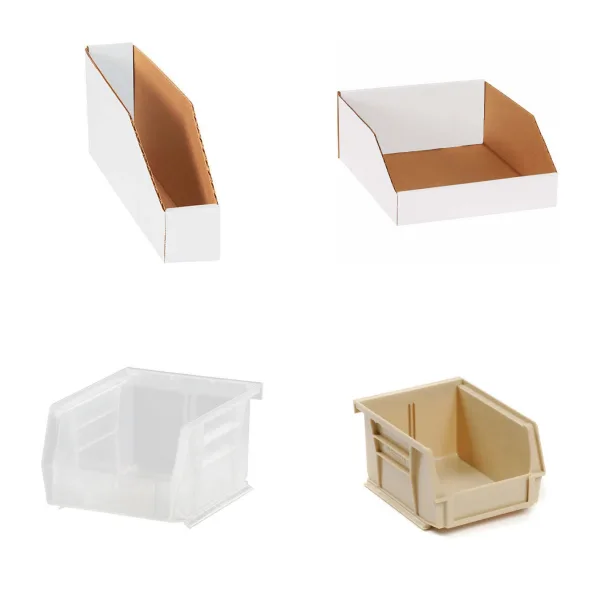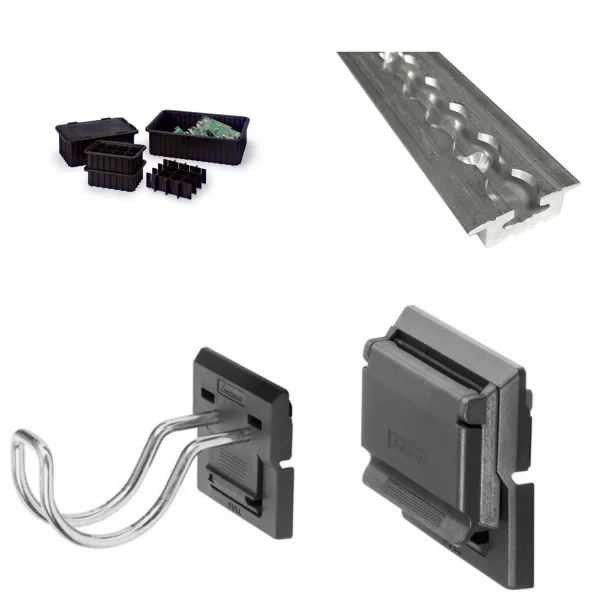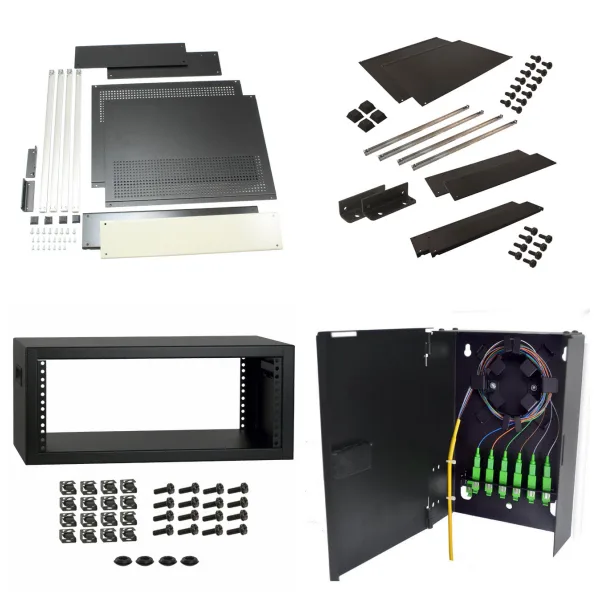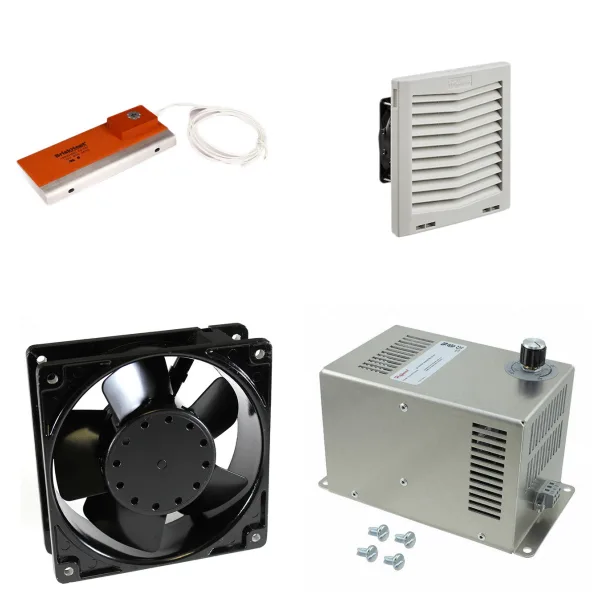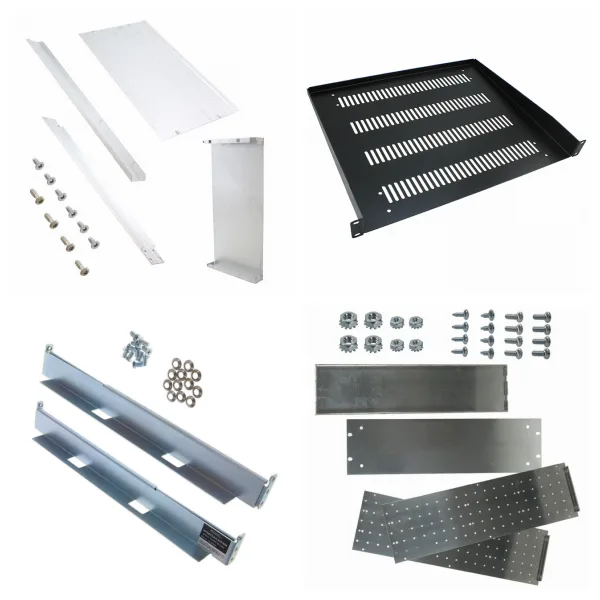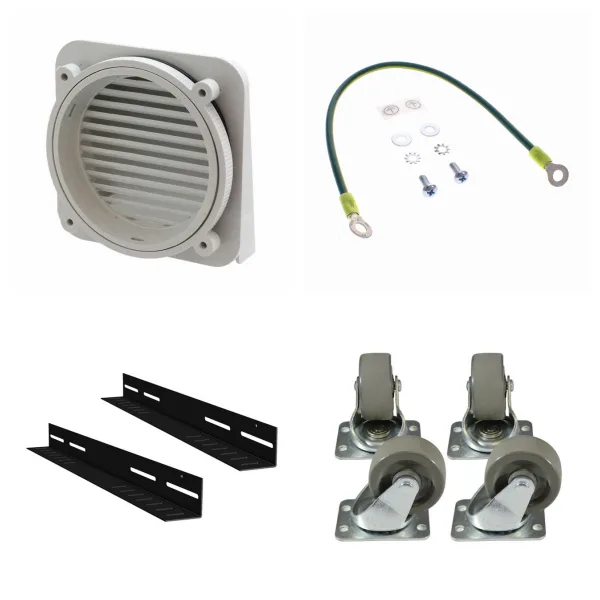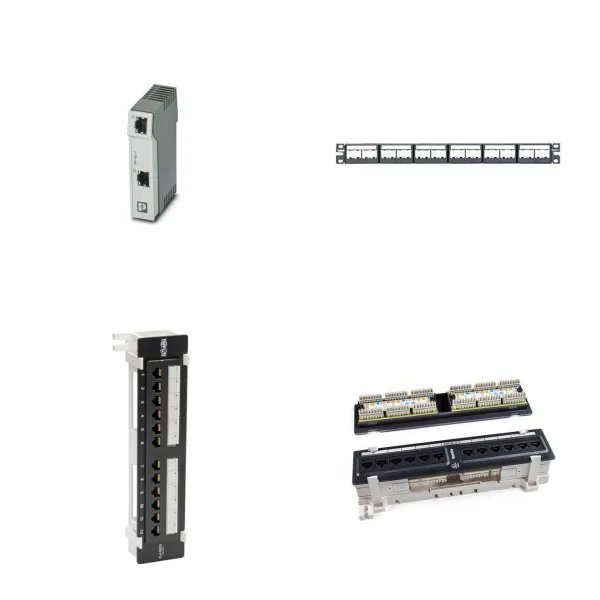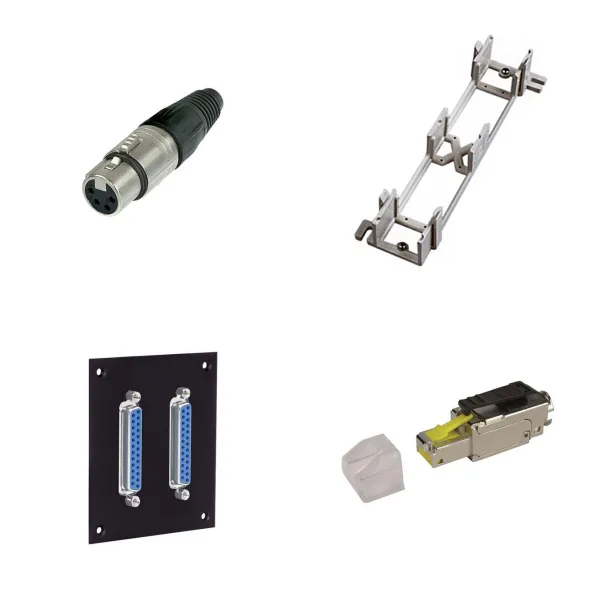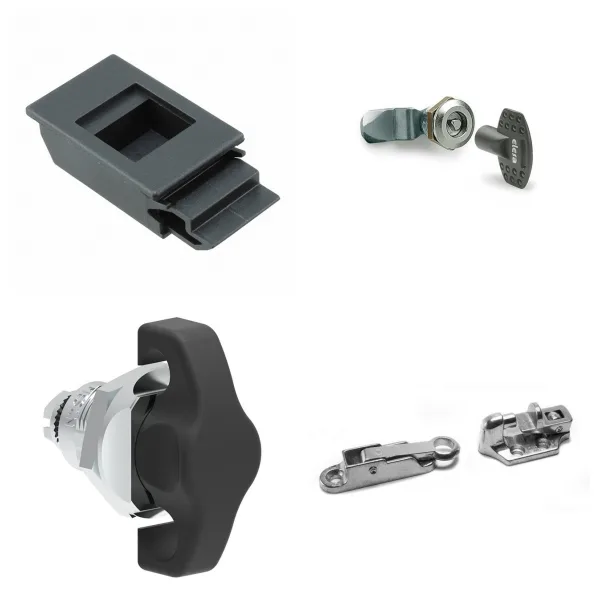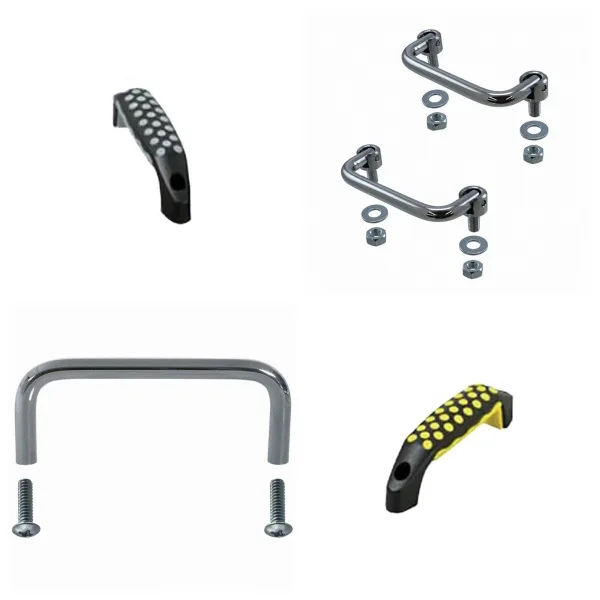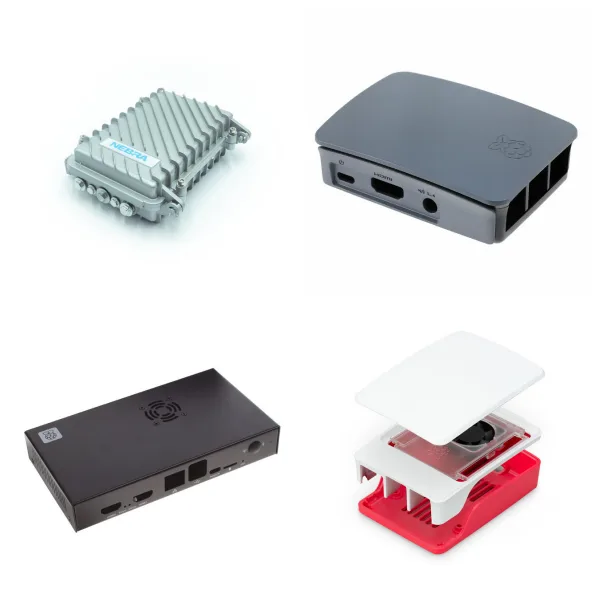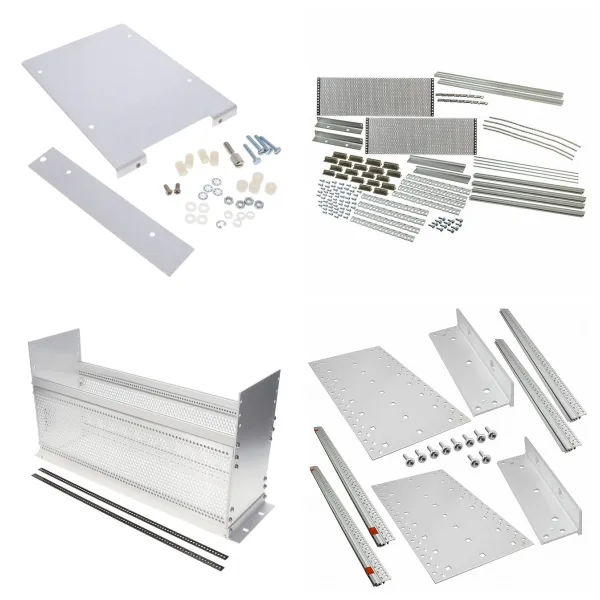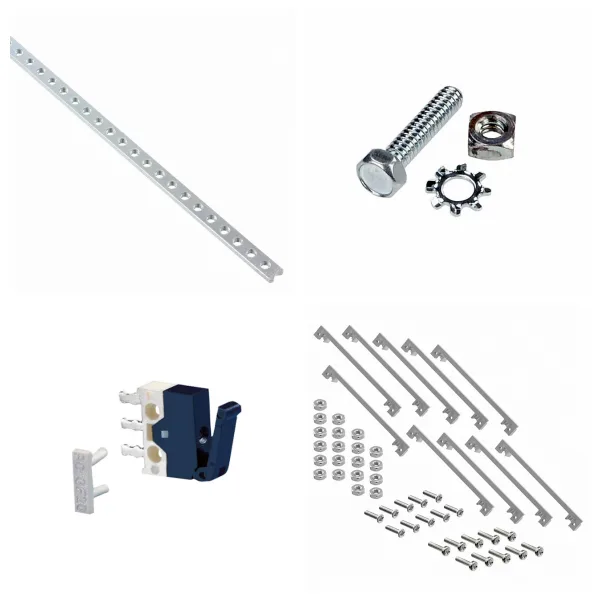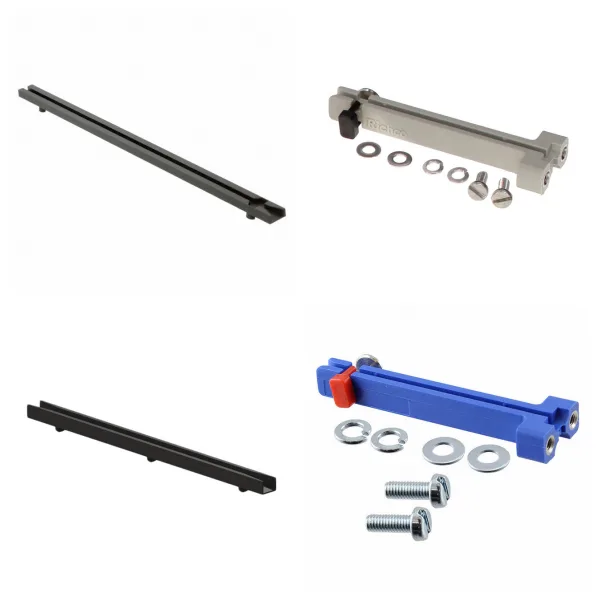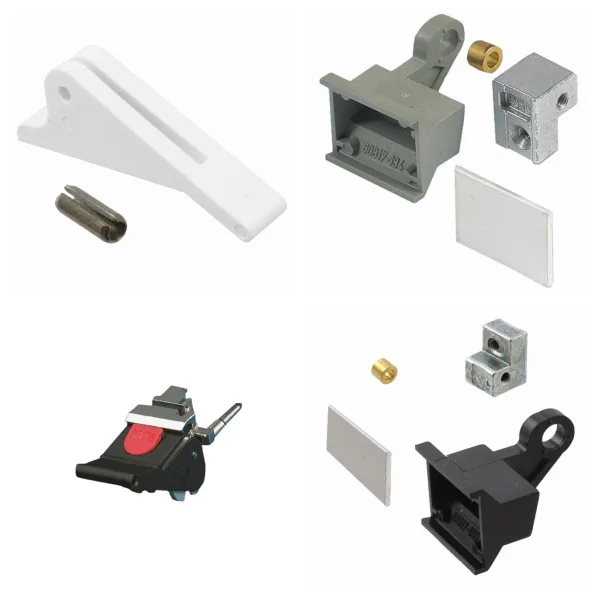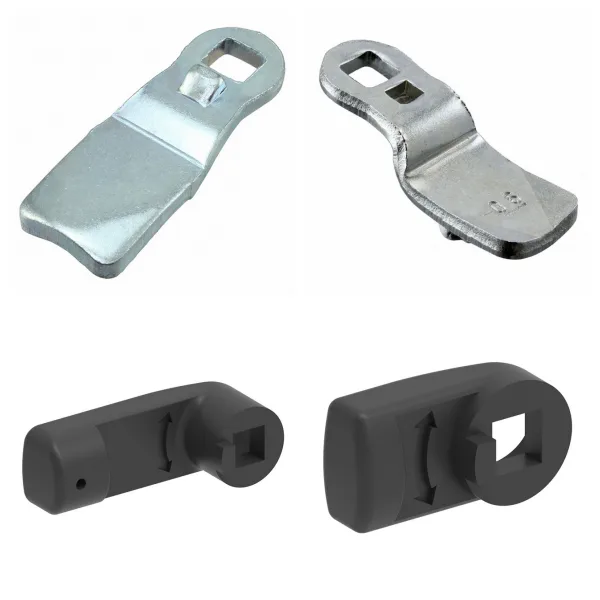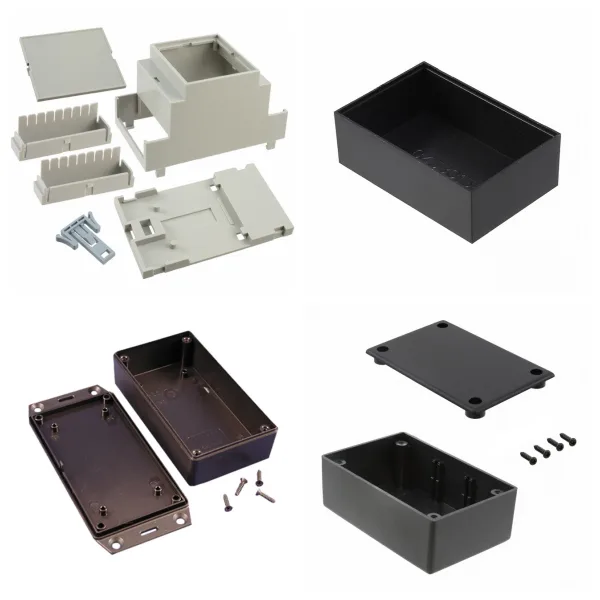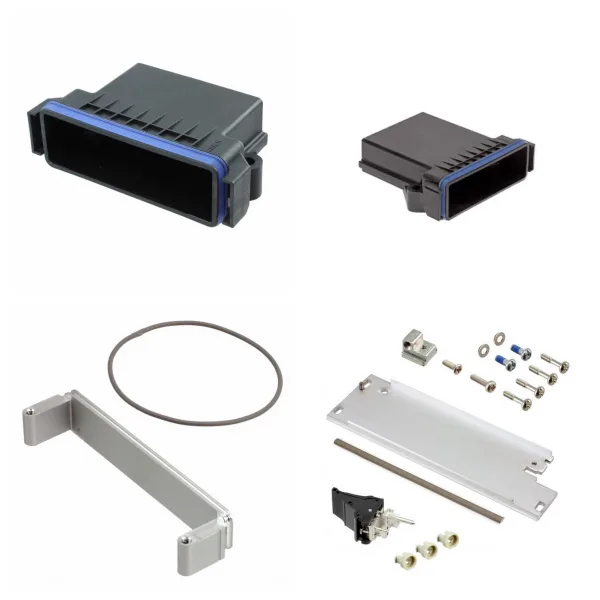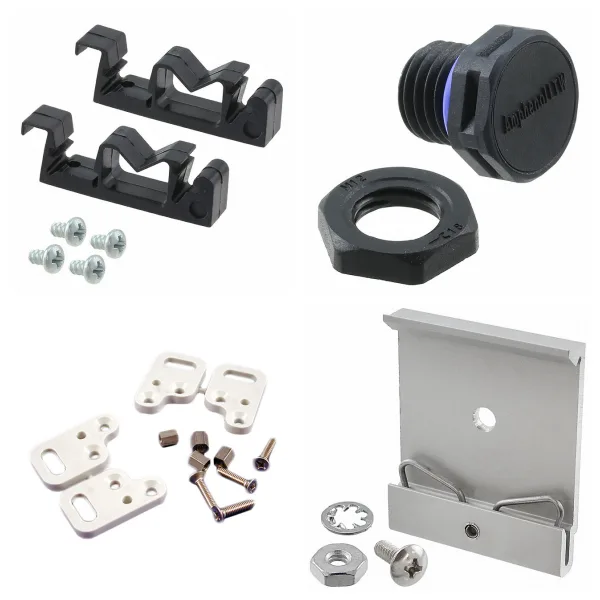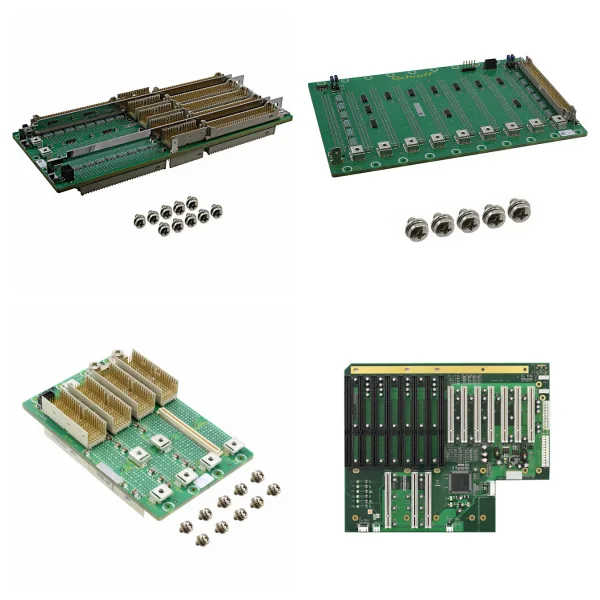<h1> Storage </h1> <p> Storage includes standalone or add-on storage solutions. These containers come in a variety of sizes, colors, and materials and have options for bins or shelves. </p> <p>
<h1> Storage Accessories </h1> <p> Storage accessories are used to add features to enclosures and boxes such as air baffles and partitions, battery clips, feet and bases, cord grips, covers, seals, DIN rails, grounding, hinging and mounting hardware, PC board adapters, locking kits, etc. Box accessories are selected by manufacturer, product series, and the related products for which they are used. </p> <p>
<h1> Racks </h1> <p> Products in the rack family are equipment mounting and enclosure systems based on standardized sets of equipment dimensions, used to mechanically assemble and contain mechanically compatible system subcomponents from various manufacturers in an organized and mechanically secure fashion. Open and enclosed racks are included and are offered in floor standing, wall mount, console, and other styles. </p> <p>
<h1> Rack Thermal Management </h1> <p> Products in the rack thermal management family include mounting hardware, air movers, cooling, and heating accessories used in conjunction with standardized equipment mounting racks for purposes of maintaining the temperature therein within acceptable operating limits for the equipment they contain. </p> <p>
<h1> Rack Components </h1> <p> Products in the rack component family are used in conjunction with equipment mounting racks of standardized sizes, used to assemble and interconnect system subcomponents in a secure and organized fashion. Example products include equipment chassis kits, desktops, doors & covers, locking and non-locking slide-out drawers, enclosing panels, shelves, and others. </p> <p>
<h1> Rack Accessories </h1> <p> Products in the rack accessory family are used in an ancillary or supporting fashion in conjunction with equipment mounting racks of standardized sizes. Example items include mounting and mechanical fixation hardware, seismic anchor kits, blanking panels, bonding studs, bus bars, cable guides & cable management products, wheels & casters, fan grills and filters, floor stand kits, gaskets, light kits, grounding kits, mounting rails, and others. </p> <p>
<h1> Patchbay, Jack Panels </h1> <p> Jack panel patchbays are arrays of similar jack connectors that allow the user to select signals and easily interconnect them using patch cables to desired inputs and outputs of connected devices. Patchbays are also used to monitor and test signals in a convenient, flexible manner. They are differentiated by termination style, number of rows and number of positions. </p> <p>
<h1> Patchbay, Jack Panel Accessories </h1> <p> Patchbays and jack panels are arrays of connectors of similar type or kind, used for routing or interconnecting large numbers of signal paths in applications such as data centers or distribution points for wired network infrastructure. Products in this family are ancillary to or supportive of items including mounting hardware, cable strain reliefs, items used for marking or identification, plugs for empty connector spaces, and others. </p> <p>
<h1> Latches, Locks </h1> <p> Latches and Locks are designed to secure anything from cabinets to machine covers to toolboxes. The types include cam latch, cam latch/padlockable, cam lock, compression latch, compression lock, L-handle cam latch, L-handle cam lock, lift and turn latch, rotating, slam cam latch, sliding lock, swell latch, swinghandle, T-handle cam latch, T-handle cam lock, T-handle compression latch, and T-handle compression lock. </p> <p>
<h1> Handles </h1> <p> Handles are supplementary parts that are designed to be added to objects to aid in lifting, pulling, carrying, and moving of the object to which they are attached. Handles come in various types such as drawer, flat folding, hinged ends, inset, and rotating. They are available with heights ranging from 0.190” to 6.500” and lengths of 0.750” to 24.000”. The typical materials for handles are ABS, aluminum, brass, nylon, phenolic, plastic, polyamide, polycarbonate, polypropylene, PVC, stainless steel, steel, styrene, thermoplastic, and vinyl. </p> <p>
<h1> Evaluation, Development Board Enclosures </h1> <p> Development Board Enclosures are designed to hold a specific evaluation platform board. Example evaluation boards include Arduino, Banana Pi, BeagleBone, Raspberry Pi, PandaBoard, and micro:bit to name a few. </p> <p>
<h1> Card Racks </h1> <p> Items in the card rack family (also known as sub-racks) are enclosure-like products designed to established dimensional standards that provide a mechanical means of assembling large, complex systems in a modular fashion. They provide a means by which multiple circuit boards or similar equipment components can be assembled together in a modular form, which can subsequently be mounted together with other such modularized equipment in a similar, larger enclosure known as a rack. </p> <p>
<h1> Card Rack Accessories </h1> <p> Card rack accessories are designed for use with related card rack products to add features such as brackets, bus strips, conductive strips, covers, EFP module, EMC contact strip, EMC gasket, extender, seals, spacers, rails, insulators, locking hardware, switches, mounting hardware, panels, handles, ejectors, frames, screws, test hardware, and threaded inserts. </p> <p>
<h1> Card Guides </h1> <p> Card Guides are designed to align a board when it is inserted into a card rack. They are made of aluminum, beryllium copper, metal, nylon, plastic, polybutylene, polycarbonate, polyphenylene, polystyrene, stainless steel, and zinc. They come in lengths of 0.312” to 48.000” and come in chassis, snap-in, or screw mount versions. </p> <p>
<h1> Card Guide Accessories </h1> <p> Card guide accessories are designed for use with related card guide products to add features such as card pullers, clips, coding pins, ejector handles, ESD protection, extender brackets, grounding, insertion and extraction capability, LED indicators, PCB ejectors and inserters, retainers, and wedgelocks. Keying tools for pin installation are also included as card guide accessories. </p> <p>
<h1> Cams </h1> <p> Securing a box, rack or other enclosure may require a lockable cam latching mechanism. Plastic and zinc plated steel cams added to a wide variety of keyed locking mechanisms prevents unwanted tampering and theft. Cams are available that include a built-in stopper and are differentiated by lengths from 25 to 68 mm and widths from 13 to 19 mm. Height dimensions include forward or reverse offset bends. </p> <p>
<h1> Boxes </h1> <p> Box products are used to contain or enclose materials or equipment in a variety of contexts; plastic or metallic boxes suitable for constructing enclosures for electronic equipment such as guitar pedals, equipment cases for transporting tools or equipment, console style enclosures convenient for constructing operator interfaces, junction boxes for enclosing cable distribution points or providing for service access, key fob style enclosures for remote control or access applications, and others. </p> <p>
<h1> Box Components </h1> <p> Box components add functionality to enclosures and boxes such as drawers, mounting features, side panels, PC boards, bases, shelves, terminals, windows, plates, power entry, filters, DIN rail, etc. Box components are selected by manufacturer, product series, feature added, dimension, color, composition material, and the related products for which they are used. </p> <p>
<h1> Box Accessories </h1> <p> Box accessories are used to add features to enclosures and boxes such as air baffles and partitions, battery clips, feet and bases, cord grips, covers, seals, DIN rails, grounding, hinging and mounting hardware, PC board adapters, locking kits, etc. Box accessories are selected by manufacturer, product series, and the related products for which they are used. </p> <p>
<h1> Backplanes </h1> <p> Backplanes are boards with a series of connectors attached to them in parallel. They are often located on the rear of a card rack allowing connection for other boards or devices to be inserted into the connectors. The number of channels range from 2 to 21 with interface options such as CompactPCI, Standard Bus, Uncommitted, VME J1, VME J1/J2, and VME J1/J2/J0. </p> <p>

